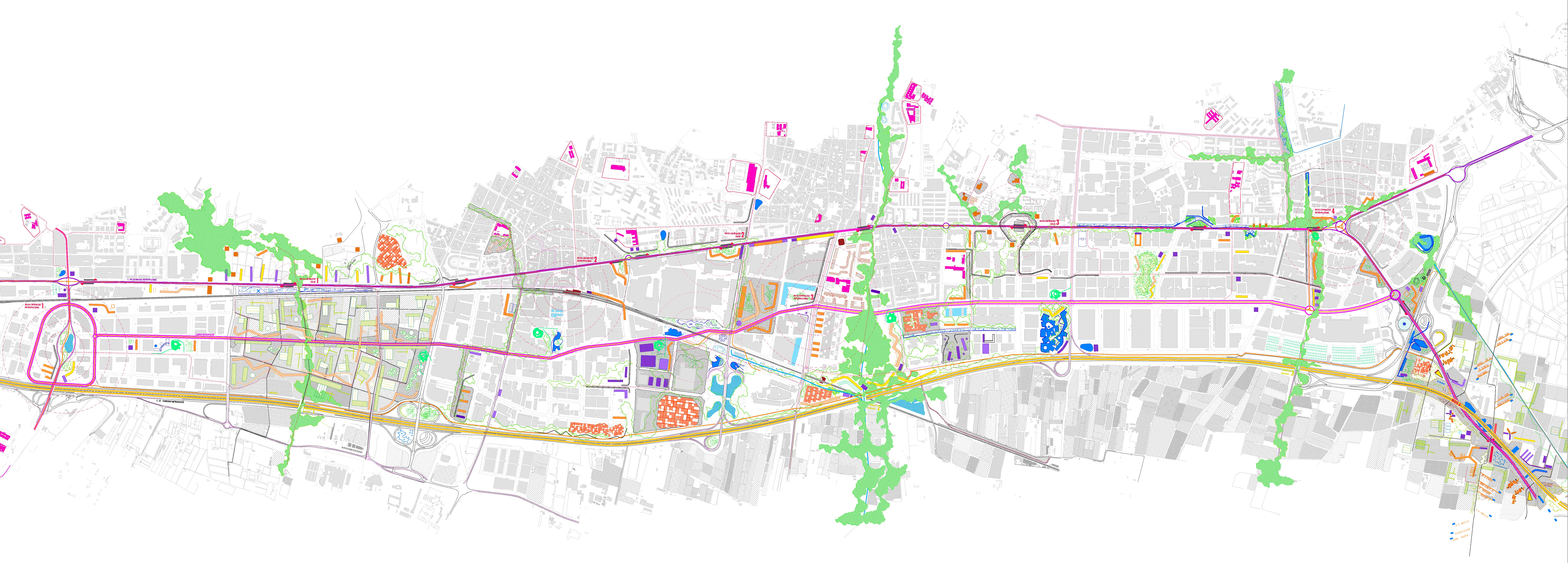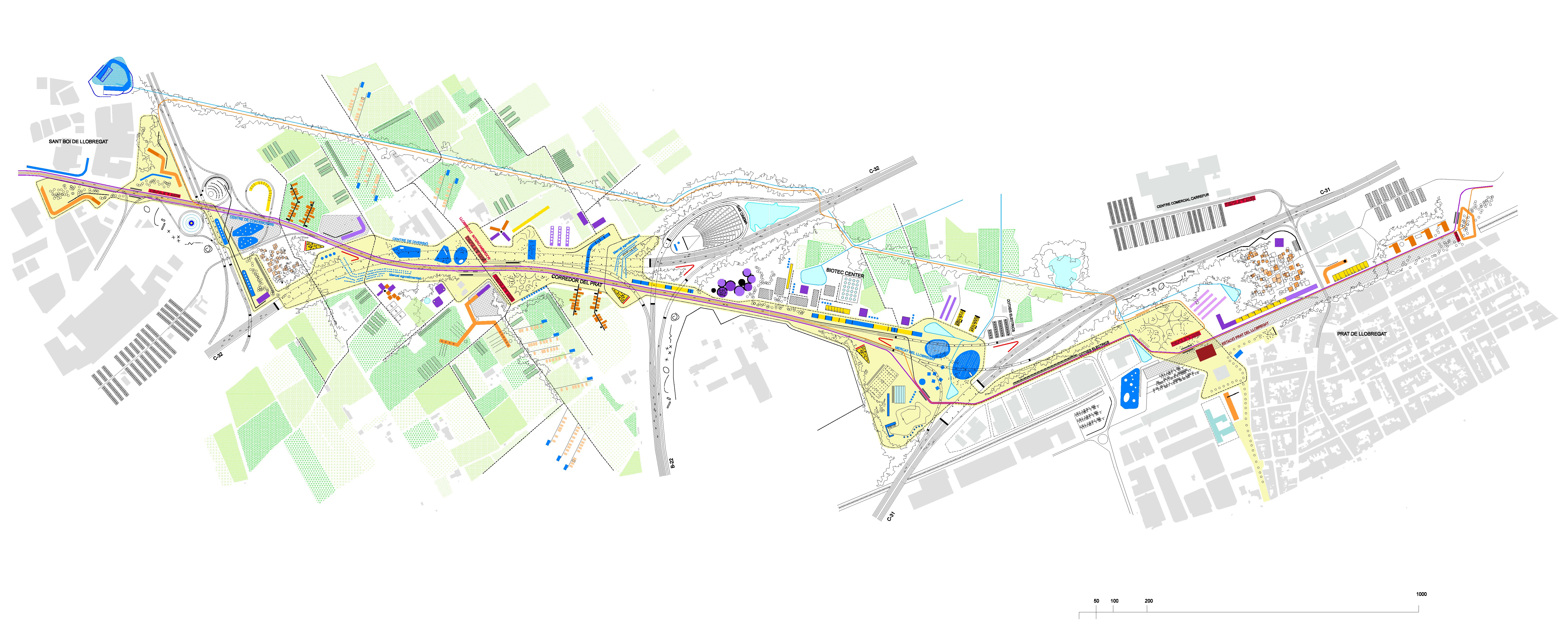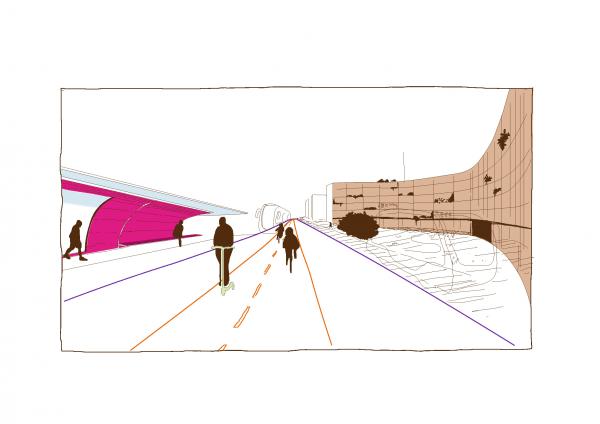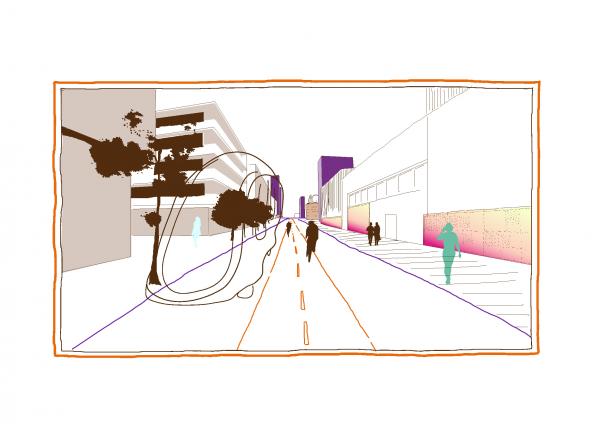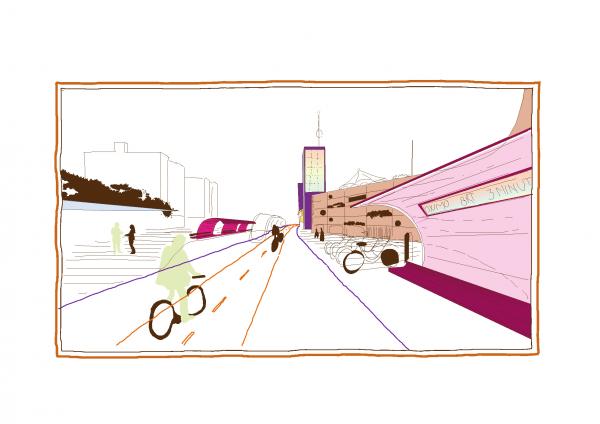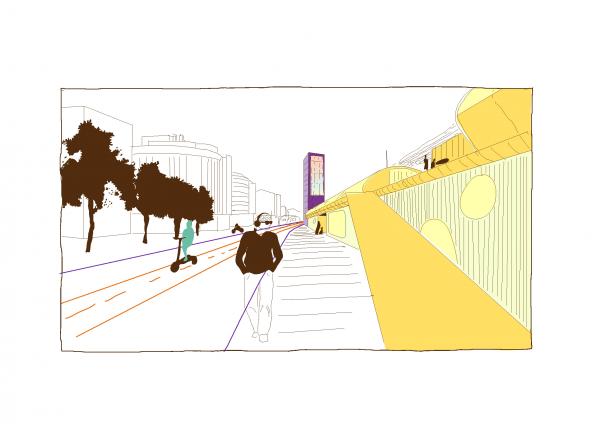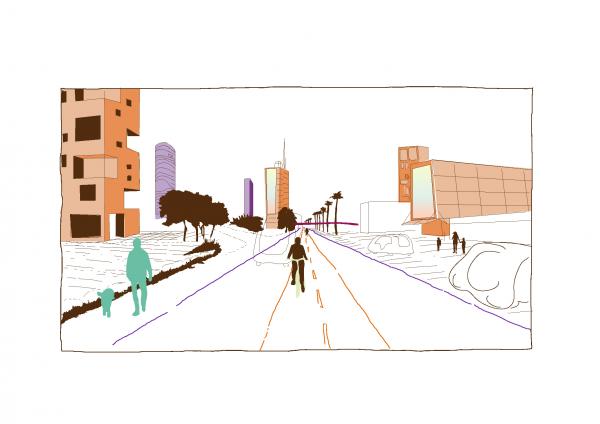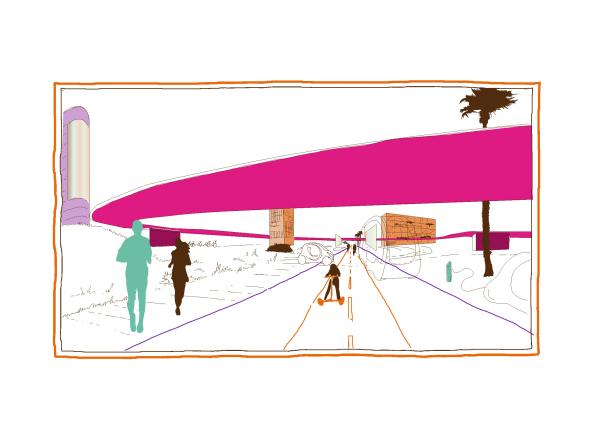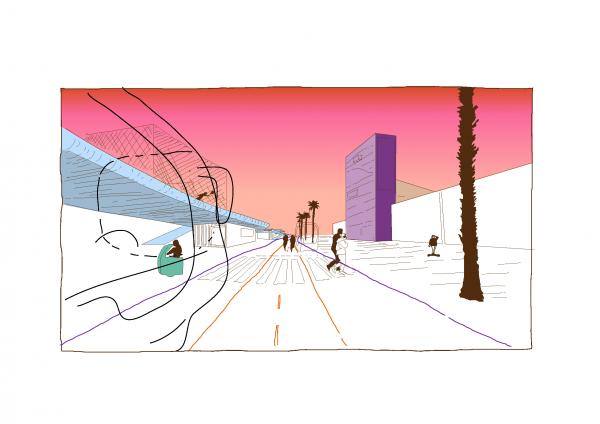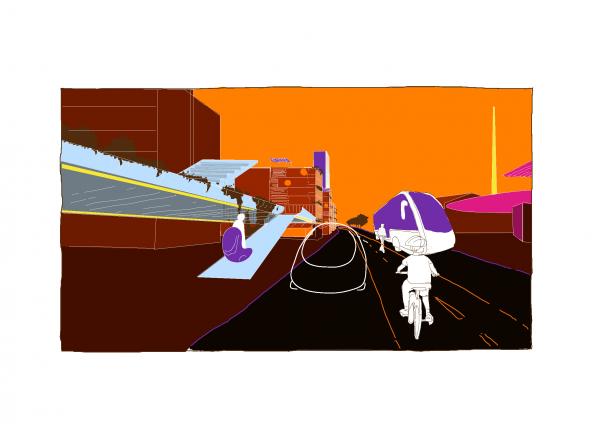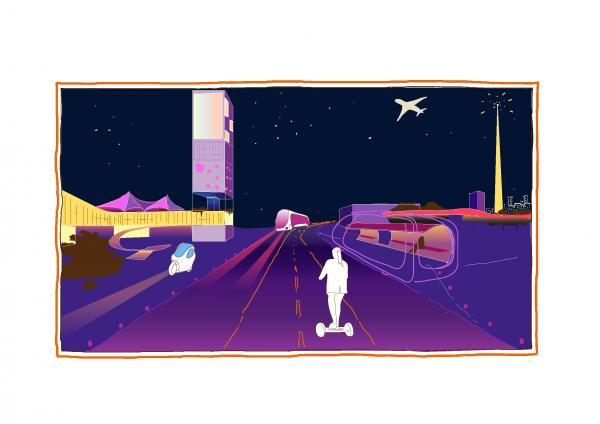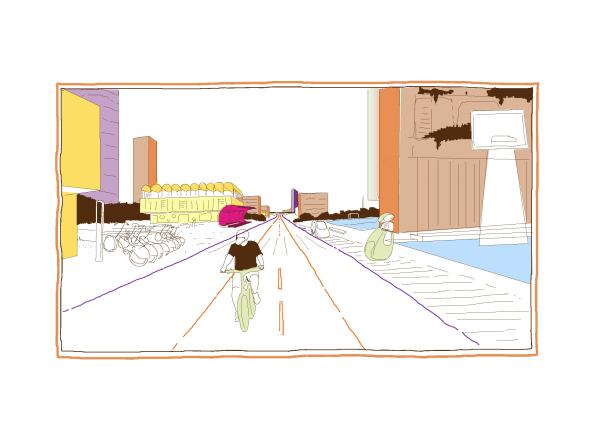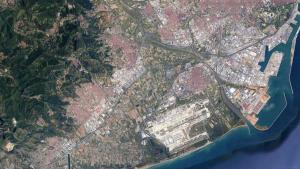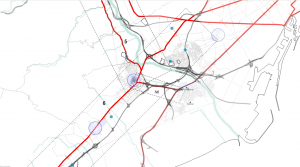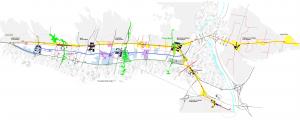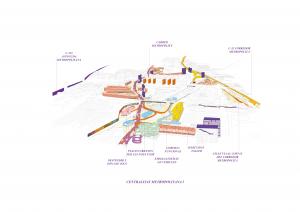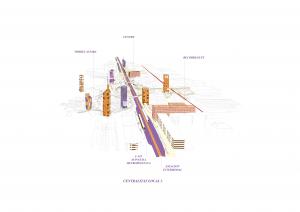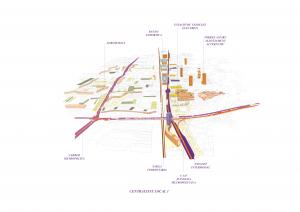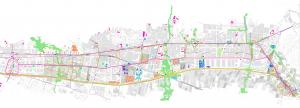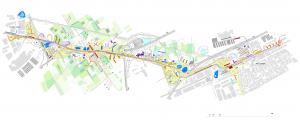2020. Competition El Futur de les infraestructures viàries: nusos i cruïlles. Barcelona
Phase 1 selection
LencolatDeLaCiutat

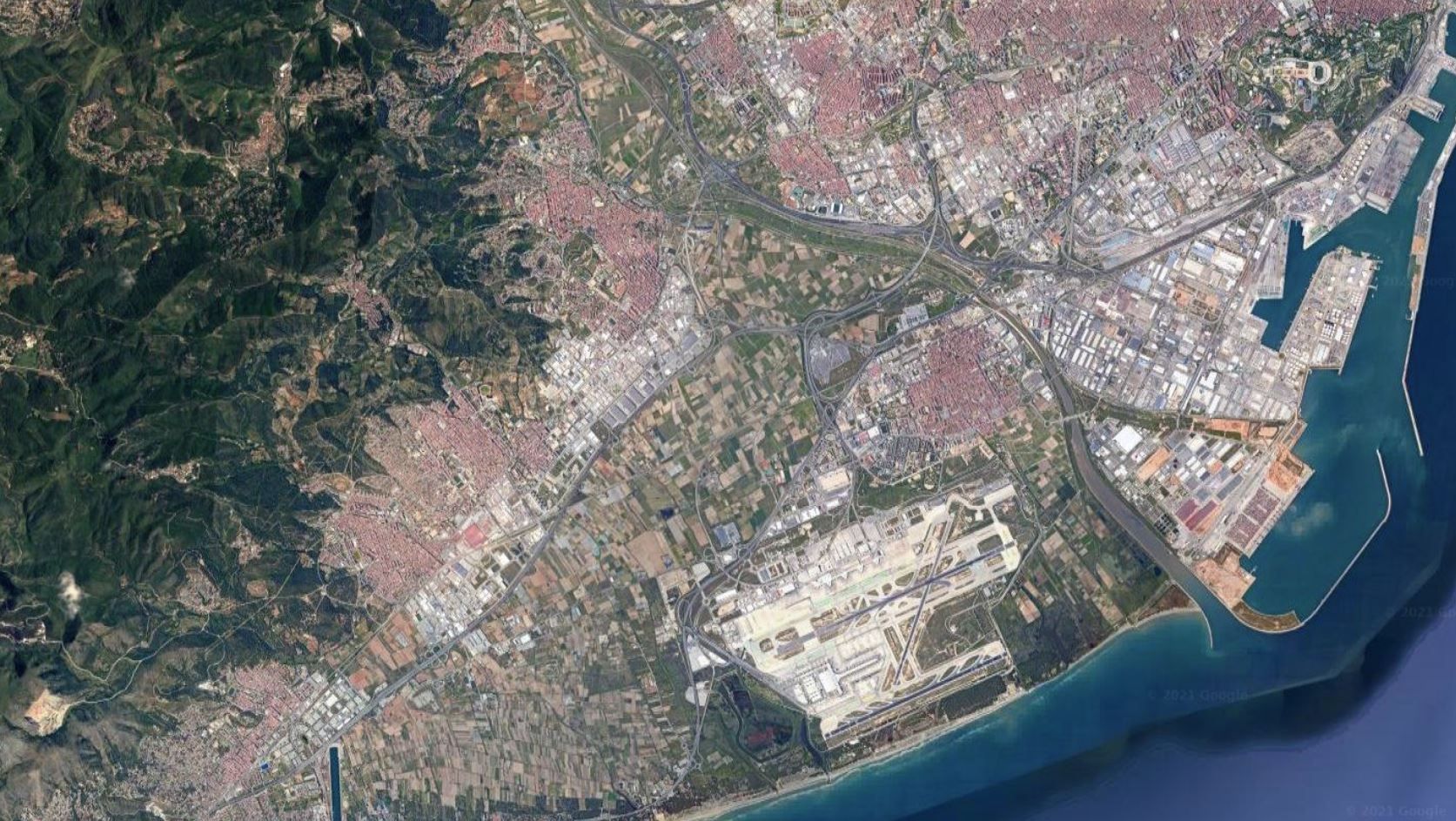
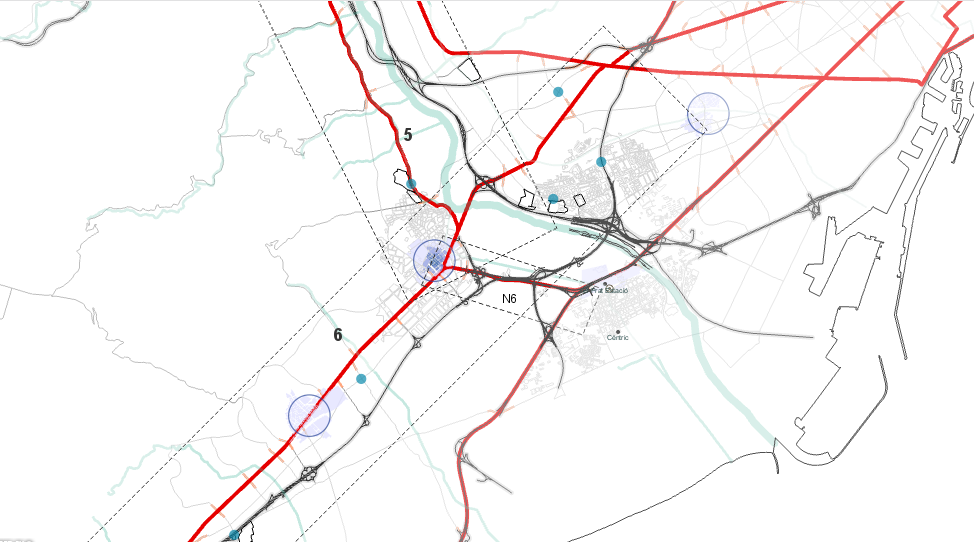
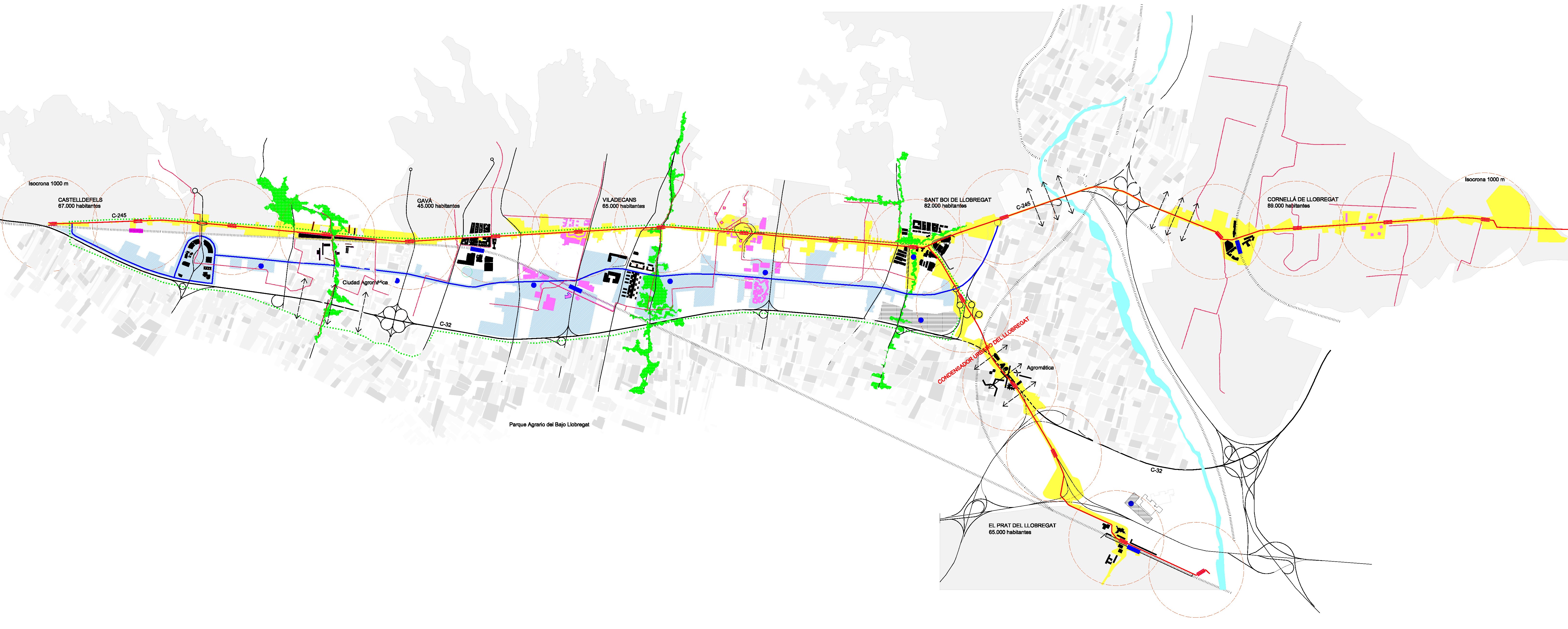
The Metropolitan Urban Master Plan (hereinafter, PDU), currently being drafted by the Barcelona Metropolitan Area (hereinafter, AMB), is an instrument that can directly influence the resolution of many of these conflicts related to the metropolitan road network. The PDU seeks a mobility on a human scale that is sustainable with people and the territory (which minimizes externalities), that unites and structures the metropolitan area and that is efficient, maximizing the flows of people and not vehicles.
Space is a precious asset where private mobility and public transport have to coexist, and the PDU aims to ensure continuities for active mobility (on foot and by bicycle) and the connectivity of open spaces. This is undoubtedly one of the great challenges of metropolitan urban planning.
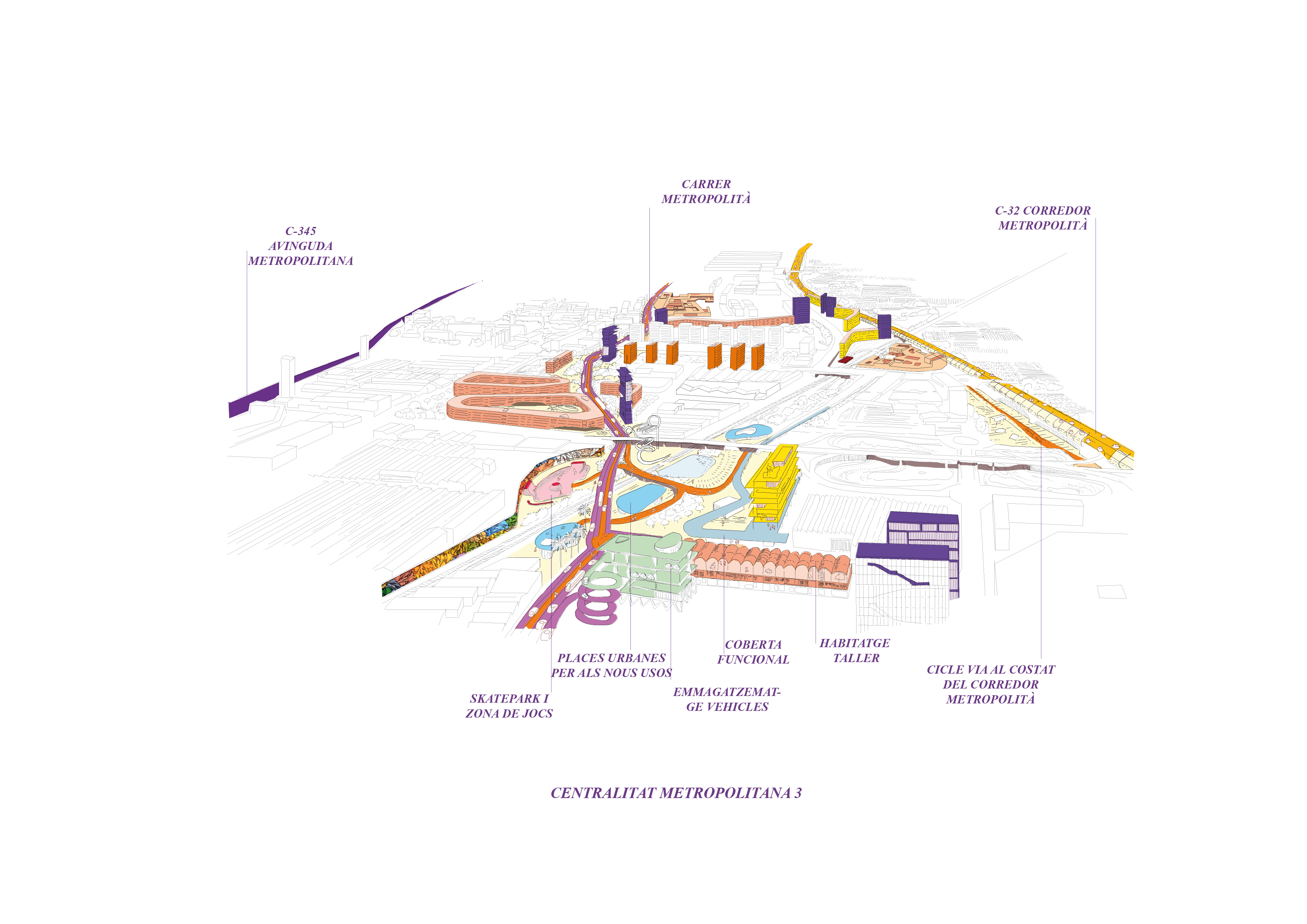
Our third strategy is to turn this monofunctional linear city into a hybrid linear city. The linear housing city invades the linear industrial city and vice versa, so that the home-work-leisure symbiosis can be completed.
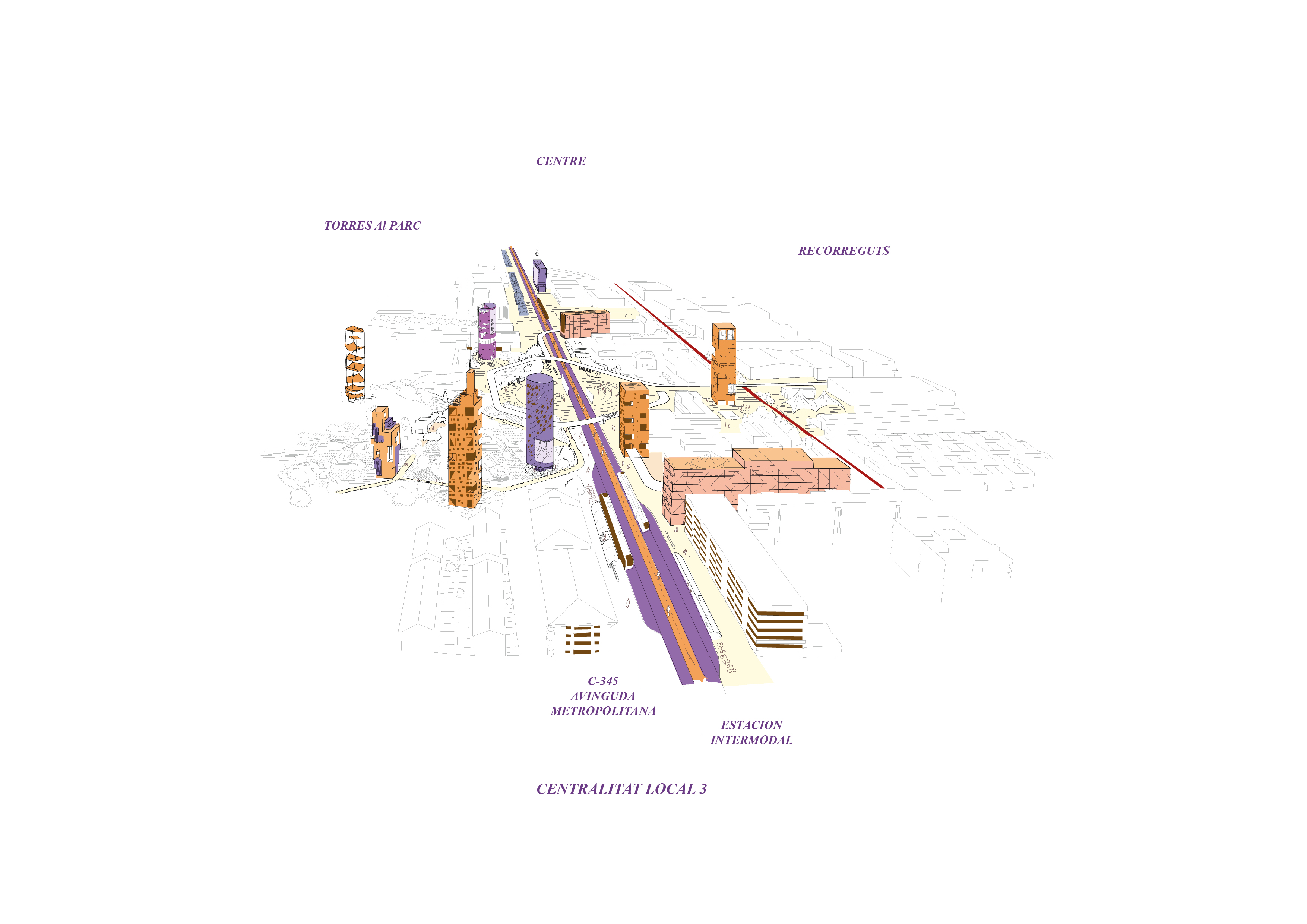
A new urban condenser is proposed, a new hybrid metropolitan center that will give continuity to the linear city and will enhance the value of the agrarian park as it is proposed as a dynamic AGROMÄTICA center for the agri-food sector. In addition, this new urban center, as part of the hybrid city, contains very diverse land uses where housing, work and leisure are mixed again in space and time.
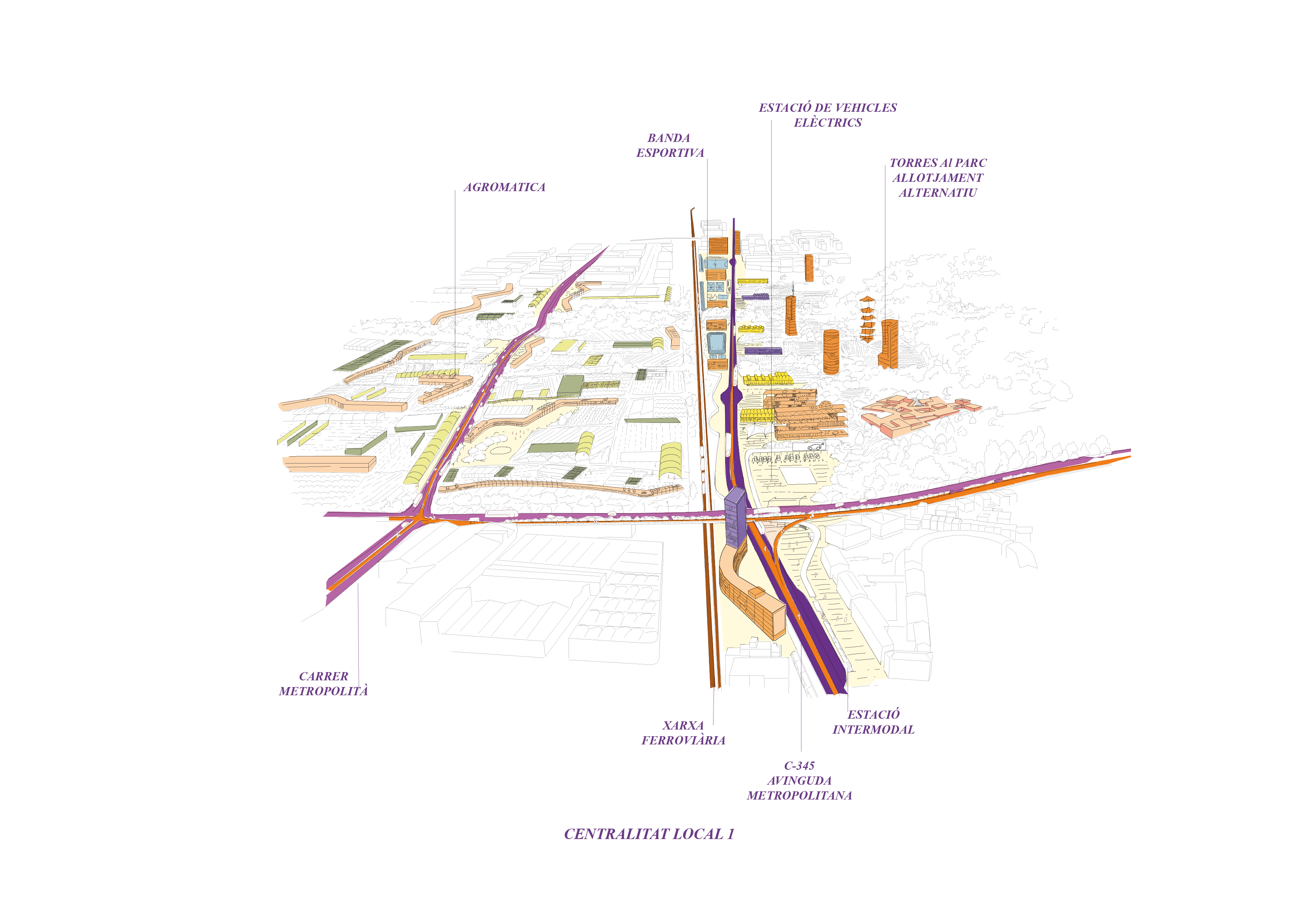
The last strategy is aimed at the revitalization of the agricultural sector of the Delta del Llobregat, allocating the largest opportunity surface of the hybrid linear city in an agromatic city. This is the Els Joncs area, a space of 90,000 m2. In this area, a medium-rural and medium-urban space is projected, aimed at agri-food technological innovation and rural accommodation.
